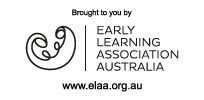Provision of Training

Employees may have received some OHS training as part of their professional qualifications. It is also very important that the employer arranges service specific OHS training and provides OHS information when required. A proactive approach to sharing information is supported by ELAA, as this usually leads to a more collaborative approach to managing OHS at a service.
This site specific OHS training and provision of OHS information to employees will be provided in the form of:
- induction training for new employees
- first aid training for employees (all staff in licensed children’s services must have first aid training and anaphylaxis training as defined in the Children’s Services Regulations 2009)
- OHS hazard specific training and/or provision of guidance information, such as safe lifting guidance and posters, and WorkSafe Victoria’s Children’s Services Compliance Kit publication
- conducting emergency response exercises in the form of desktop reviews and clarification of emergency roles of various employees, and opportunity to participate in practice drills such as evacuation drills (refer to Emergency management).
Records of site specific OHS training conducted for employees and records confirming provision of very important OHS information to employees should ideally be kept on file by the employer. When providing very important OHS information to employees, the employer may consider the need to have individual employees sign off that they have read and understood this information. As a minimum, attendance records at more formal OHS training should be kept on file. Templates are provided in this website to assist with keeping these records.
All visitors or contractors who enter a service must comply with the service’s OHS policy, as well as the Code of Conduct (for families) and Prevention of Harassment, Occupational Bullying and Violence policies. Therefore, it is recommended that the employer consider issuing copies of the OHS and the Prevention of Harassment, Occupational Bullying and Violence Policies to all new families and regular contractors. The employer should also provide existing families and regular contractors with updates if these policies are revised, as well as keep records of such issues. In addition, copies of these and other OHS policies should be posted so that they are visible in the foyer area, where they are available to visitors.
OHS Induction
OHS induction for new employees is important. Conducting an OHS induction as soon as practicable when the employee commences at a service sends a strong message that the employer is committed to managing OHS well. It also shows that the employer is committed to a collaborative approach to OHS, working with and actively seeking input from employees. OHS inductions should include:
- the person with whom to raise OHS issues with and seek OHS help
- how to report OHS hazards so that they will be attended to
- how to report OHS incidents (including near misses, first aid, injury and illness)
- what OHS amenities are available to them
- what OHS policies and procedures are in place to help reduce the risk of harm to people.
Click here to download OHS induction checklists.

